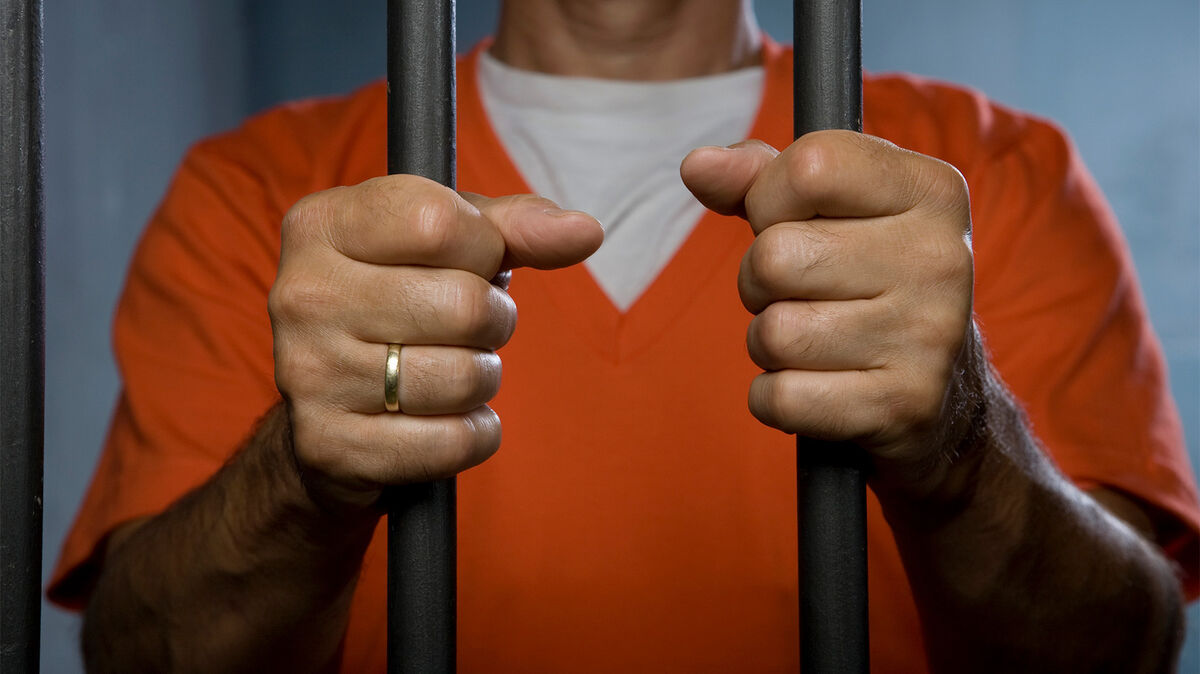P4. She was in his cell, waiting to be executed, and he asked as a last…See more
For many incarcerated individuals in South Carolina, life on death row is defined not only by the severity of their sentence but also by the harsh realities of confinement. In recent years, attention has turned to the extended periods of isolation, limited human contact, and intense psychological pressure faced by those placed on "execution watch"—the final stage of incarceration before a scheduled execution.
As the state reactivates its capital punishment protocols following a 13-year pause, advocates and legal experts are raising concerns about the human toll exacted by the system. While legal outcomes remain a matter for courts, the experience of death row confinement raises deeper questions about ethics, mental health, and the standards of care within correctional institutions.
A Return to Capital Punishment

South Carolina had not carried out an execution since 2011. This changed in 2023 after state legislators passed new laws shielding the identity of pharmaceutical suppliers, allowing officials to acquire necessary drugs to resume executions by lethal injection. These changes were accompanied by the announcement of scheduled execution dates for several inmates who had exhausted their legal appeals.
Though capital punishment remains a legal sentencing option in multiple U.S. states, the manner in which it is administered—and the conditions under which inmates live leading up to it—has become a focal point of debate.
What Is Execution Watch?

Execution watch is a designation applied to individuals whose legal appeals have been exhausted and who have received a scheduled execution date. In South Carolina, this phase brings with it a significant shift in daily life. The inmate is transferred to a specialized cell—separate from general death row housing—where increased security measures and extended isolation are implemented.
According to legal representatives and human rights organizations, the conditions during this period are stark:
-
Inmates are confined to small single-occupancy cells, often narrow enough for them to touch both walls with outstretched arms.
-
Physical interaction with others is virtually eliminated.
-
Meals are served through a tray slot, and basic supplies such as soap, towels, or cleaning tools are provided infrequently.
-
Scheduled recreation time is limited and may be delayed or cancelled depending on staff availability.
-
The individual is under constant surveillance, including while using the toilet or attempting to bathe.
-
Visits from family or legal counsel take place behind glass, and strip searches are required before and after each movement.
While these policies are justified by correctional officials as security measures, critics argue that they amount to prolonged solitary confinement, a practice that has been widely scrutinized by human rights experts.
The Psychological Weight of Isolation

Mental health professionals warn that such extreme isolation—particularly for weeks or months at a time—can have serious effects on psychological well-being. Individuals placed on execution watch often report symptoms such as:
-
Heightened anxiety and emotional distress
-
Difficulty sleeping or eating
-
Disconnection from time and reality
-
Deep feelings of abandonment and despair
Experts note that this form of extended solitary confinement can result in depression, emotional dysregulation, or even long-term cognitive impairment. For inmates who have spent years adjusting to the routines and limited social connections of general death row, the abrupt change in environment can be particularly destabilizing.
One mental health advocate described the experience as “a form of psychological punishment before the sentence itself is carried out.”
Human Bonds Amid Harsh Conditions

Despite the severe constraints, stories from within death row reveal enduring moments of humanity. Many incarcerated individuals build strong bonds with one another, offering mutual support through prayer, shared reading materials, or simple gestures of kindness.
Former inmates and attorneys describe communities formed within these facilities—people who celebrate birthdays together, offer counsel during family hardships, and maintain dignity through small acts of care. Some have noted that these relationships provide a crucial source of emotional strength, especially for those who spend decades in custody.
When individuals are moved to execution watch, however, these connections are abruptly severed. The resulting emotional toll can be difficult to quantify, but for many, it represents a deep sense of isolation at a time when companionship is most needed.
Legal and Racial Justice Concerns
Beyond the physical and psychological aspects, capital punishment in South Carolina—like in many other states—raises broader legal questions. Defense teams and civil rights organizations have pointed to:
-
Allegations of racial bias in sentencing, particularly in cases involving Black defendants and white victims
-
Concerns about ineffective legal representation at trial
-
The role of plea deals offered to co-defendants in exchange for testimony
-
The risk of wrongful convictions due to unreliable evidence or unexamined claims
In several recent cases, defense attorneys have argued that critical evidence was either withheld or overlooked during the original trials. These arguments have prompted renewed calls for greater transparency, review procedures, and support for post-conviction advocacy.
Ethical Questions Surrounding Method and Timing
While South Carolina now offers three options for execution—lethal injection, electrocution, or firing squad—there remains public unease about the protocols used and the emotional impact on all involved.
Legal teams have raised concerns about the administration of sedatives during lethal injection, citing past cases where the process was unusually prolonged. Medical experts who reviewed autopsy findings in previous executions suggested that the method may not guarantee unconsciousness throughout, potentially raising ethical concerns about discomfort or awareness.
Despite these concerns, inmates are often required to choose their preferred method. For some, this decision is emotionally complex, as they weigh personal fears, the impact on correctional staff, and the desire to avoid unnecessary suffering.
A Call for Dignity and Reform
Advocates across the country are urging lawmakers to re-examine the use of capital punishment—not solely as a legal mechanism, but as a moral and societal issue. Their recommendations include:
-
Instituting independent oversight of death row conditions
-
Limiting or eliminating prolonged solitary confinement for individuals on execution watch
-
Reassessing the fairness of sentencing and trial procedures in capital cases
-
Providing access to mental health support during end-of-life incarceration
-
Increasing transparency around execution protocols and medical review
Some states have already moved in this direction, placing moratoriums on executions or abolishing the death penalty altogether. For others, the path remains contentious and politically charged.
In South Carolina, the debate continues. While supporters of capital punishment argue for its role in justice and deterrence, critics say the conditions and risks associated with death row raise more questions than they answer.
Stories of Compassion and Legacy
Even in the most difficult environments, there are glimpses of compassion, growth, and reflection. Legal advocates often speak of the meaningful conversations they’ve had with clients facing the end of their lives—exchanges about faith, family, forgiveness, and the legacy they hope to leave behind.
Some inmates write poetry, letters, or spiritual reflections. Others reach out to family members, hold on to photos of grandchildren they’ve never met, or share memories with those who sit by their side during visits. In their words, there is often a quiet plea to be seen as more than their sentence—to be acknowledged as whole human beings.
One attorney noted, “What many of them want most is simply to be heard—to know that their lives, even in these final moments, have value.”
Looking Ahead
As public awareness grows, so too does the call for a justice system that balances accountability with compassion. The question is not only how society punishes, but how it chooses to care for those who are, by law, nearing the end of their lives.
“Life on death row in South Carolina” is about more than policy—it’s about the people who live behind the walls, the systems that govern their treatment, and the collective values that guide our responses to crime, punishment, and redemption.
Sources
Related articles
The Latest
P4. Viral “Half Pig, Half Human Baby” Story Debunked: Why We Must Verify What We Share Online
Stories that go viral on social media often captivate our attention with shocking or unbelievable headlines. One such example that surfaced earlier this year claimed that a half pig, half human baby had been born and survived in Kenya. The ...
P2. Viral “Half Pig, Half Human Baby” Story Debunked: Why We Must Verify What We Share Online
Stories that go viral on social media often captivate our attention with shocking or unbelievable headlines. One such example that surfaced earlier this year claimed that a half pig, half human baby had been born and survived in Kenya. The ...
P1. Viral “Half Pig, Half Human Baby” Story Debunked: Why We Must Verify What We Share Online
Stories that go viral on social media often captivate our attention with shocking or unbelievable headlines. One such example that surfaced earlier this year claimed that a half pig, half human baby had been born and survived in Kenya. The ...
P4. She was in his cell, waiting to be executed, and he asked as a last…See more
For many incarcerated individuals in South Carolina, life on death row is defined not only by the severity of their sentence but also by the harsh realities of confinement. In recent years, attention has turned to the extended periods of ...
P2. She was in his cell, waiting to be executed, and he asked as a last…See more
For many incarcerated individuals in South Carolina, life on death row is defined not only by the severity of their sentence but also by the harsh realities of confinement. In recent years, attention has turned to the extended periods of ...
 F. Is This a 68-Year-Old Human ‘Barbie Doll’ After Botched Plastic Surgeries? - Improve your life
F. Is This a 68-Year-Old Human ‘Barbie Doll’ After Botched Plastic Surgeries? - Improve your life P2. The Vatican Faces Scrutiny: A Reflection on Modern Religious Leadership and Forgiveness
P2. The Vatican Faces Scrutiny: A Reflection on Modern Religious Leadership and Forgiveness P4. The Search for Travis Decker: A Father Sought in Tragic Family Case
P4. The Search for Travis Decker: A Father Sought in Tragic Family Case P3. Air India Pilot Issued Mayday Call Seconds After Takeoff: What It Means and Why It Matters
P3. Air India Pilot Issued Mayday Call Seconds After Takeoff: What It Means and Why It Matters









